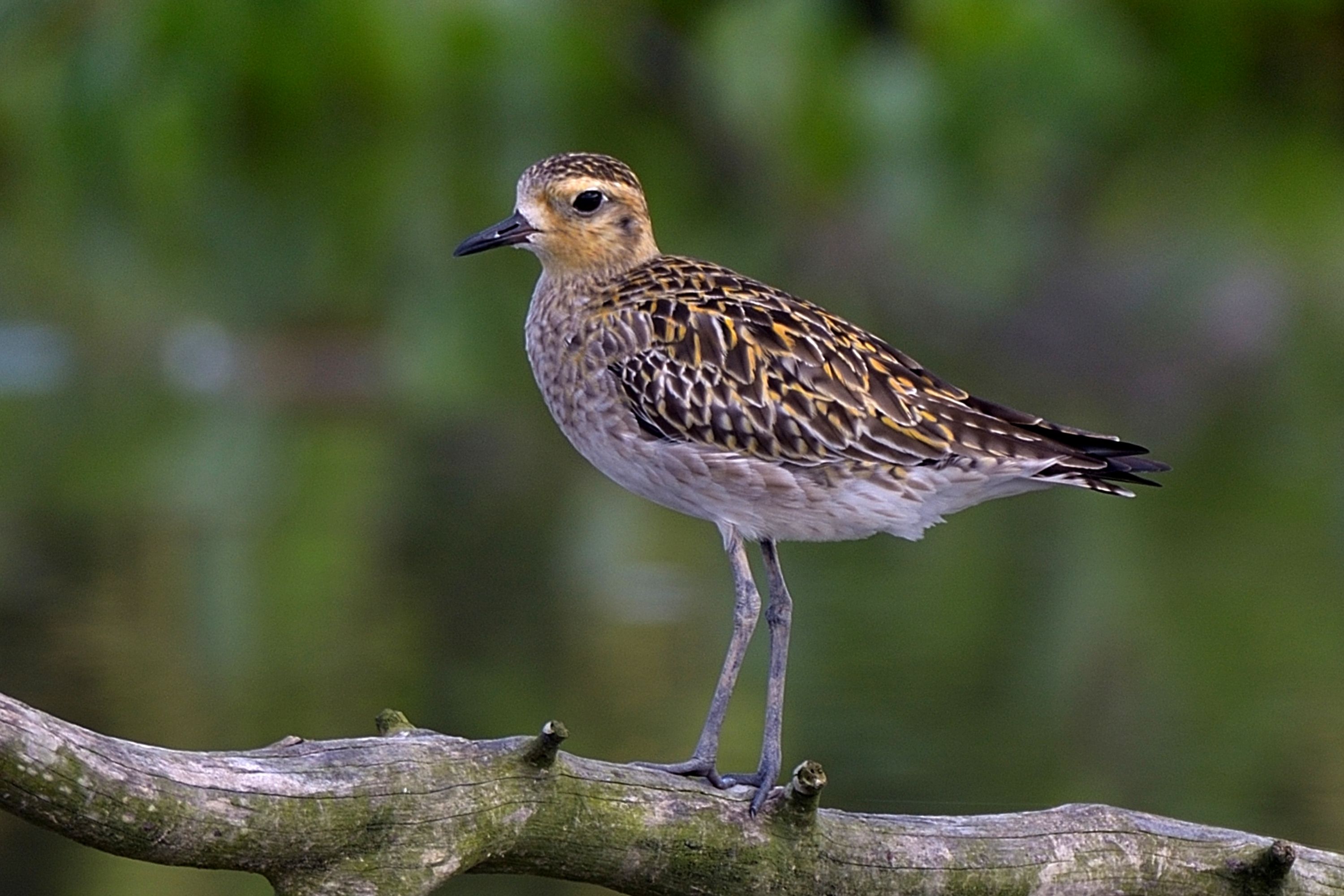Pacific golden plover
(Pluvialis fulva)

Description
The Pacific golden plover (Pluvialis fulva) is a migratory shorebird that breeds during Alaska and Siberia summers. During nonbreeding season, this medium-sized plover migrates widely across the Pacific. The genus name is derived from pluvia, Latin for “rain.” It was once believed that golden-plovers flocked when rain was imminent. The Latin species name fulva means tawny or yellowish-brown. In the Hawaiian language, the bird is called kōlea. The Māori of New Zealand call the bird kuriri. Adults are about 10 inches (25 cm) long with a wingspan averaging 24 inches (61cm.) At their lightest, fat free, the birds weigh around 3.7 ounces (135 g.) In March, the birds begin gaining weight. Before leaving for their Arctic breeding grounds, the birds weigh about 7 ounces (198 g.) In breeding plumage, the male is spotted gold and black on the crown, back, and wings. Face and neck are black bordered with white, breast is black, rump is dark. Bill is black, legs are gray to black. Female similar but black breast mottled and less distinct. In nonbreeding plumage, sexes look identical. The black on the face and breast bordered by white is replaced with dark brown, gray, and yellowish patterning and lighter underparts. Molt to breeding plumage begins in March and April, prior to migration. Molt to nonbreeding plumage begins in the Arctic during egg incubation. Downy chicks are spotted gold and black on head and back with whitish yellow underparts. Legs and feet adult size at hatching. Similar birds are the European Golden-Plover, Pluvialis apricaria, and the American Golden-Plover, Pluvialis dominica. The Pacific golden plover is more similar to the American golden plover, with which it was once considered the lesser golden plover. The Pacific Golden-Plover is slimmer than the American golden plover, has longer legs, and usually has more yellow on the back. The Pacific golden plover is migratory, breeds during May, June, and July in Alaska and Siberia. Migrates south to Asia, Australasia, and Pacific islands in August and September, and stays until April or May. A rare vagrant to western Europe. Although a shorebird, the Pacific Golden-Plover feeds mostly inland, preferring open spaces with short vegetation. During the breeding season, the Arctic tundra provides insects and berries for food, and effective camouflage for predator avoidance.
Taxonomic tree:







